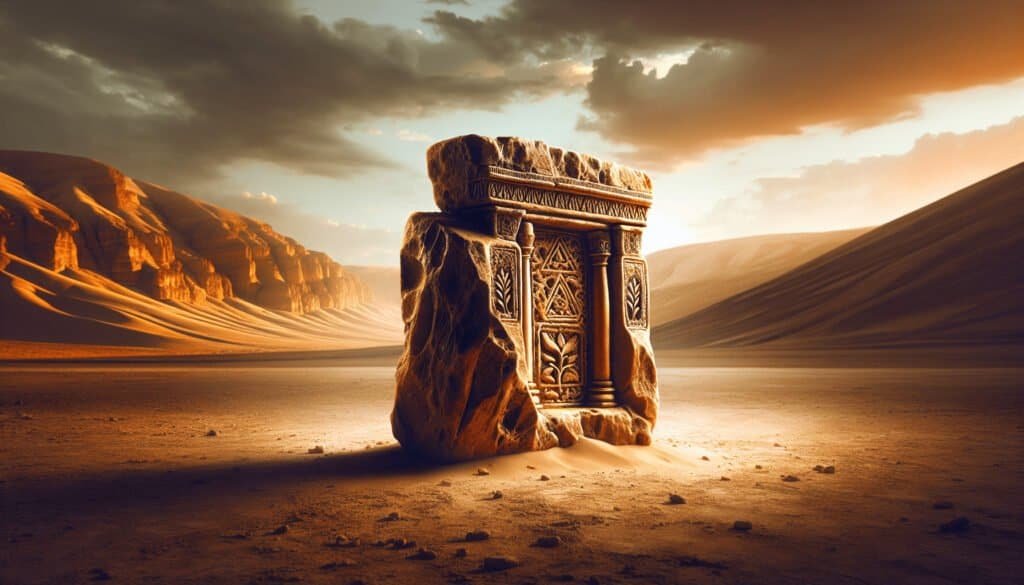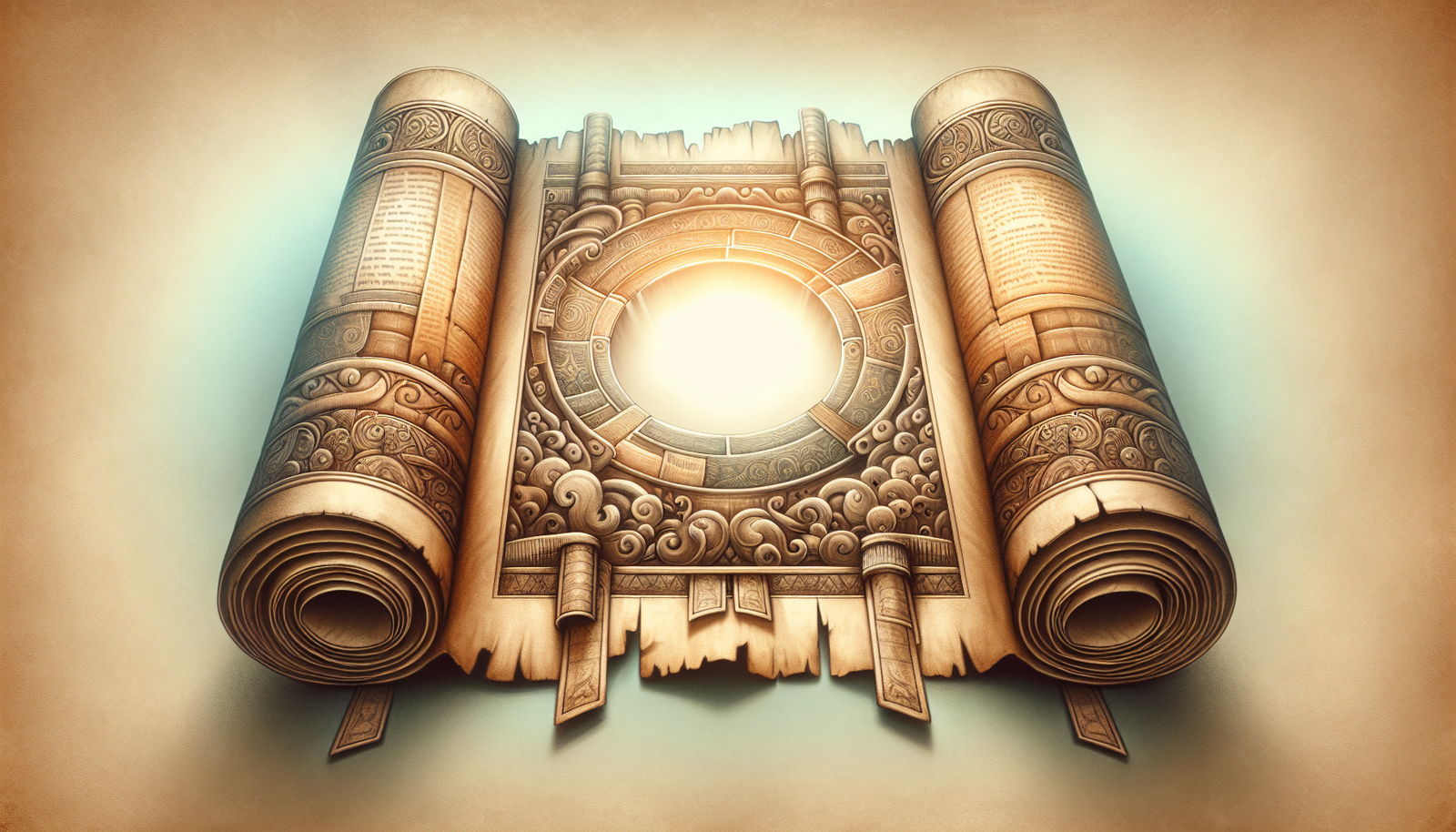What do you think of when you hear the word “hope”? Is it a fleeting feeling, a tangible goal, or perhaps a testament rooted deeply in history? In the arid swathes of Israel, the Ein Gedi Fallen Stones stand as silent witnesses to human aspiration and resilience amid desolation. These remnants tell stories not just of ancient people but of enduring hope, making them a fascinating subject of study.
The Geography of Ein Gedi
Ein Gedi, a lush oasis on the western shore of the Dead Sea, presents a stark contrast to the sprawling desert that envelops it. A few palm trees and ample fresh water greet visitors with unexpected vibrancy. You gradually come to appreciate that this verdant spot is not just a geographical oddity but is rich in cultural and historical significance.
The region’s topography includes rugged cliffs and rolling hills, creating a unique micro-ecosystem in the wilderness. This setting was crucial for ancient people who sought refuge in its protective embrace. The area’s freshwater springs and fertile land made it a coveted place for settlement, surviving generations long after the surrounding desert had engulfed other communities.
A Brief Historical Overview
Historically, Ein Gedi has been a refuge for various groups, from the ancient Israelites to more recent travelers. The Bible mentions Ein Gedi as a place where King David sought sanctuary from King Saul (1 Samuel 24). This episode underscores the significance of the area not just as a geographical location but also as a pivotal point in biblical narratives.
You find that the richness of Ein Gedi’s history is reflected in its archaeological discoveries. The excavations have revealed structures, pottery, and inscriptions that attest to its vibrant past. However, the Fallen Stones are perhaps the most poignant symbols of this area’s enduring legacy.
The Fallen Stones: A Testament of Hope
What Are the Fallen Stones?
The Fallen Stones refer to a collection of ancient inscriptions and artifacts unearthed at Ein Gedi. These relics, which date back to the early Byzantine period, offer a window into the thoughts, prayers, and aspirations of people who lived in an unforgiving landscape. The inscriptions are often poignant messages that convey a mix of sacred and everyday sentiments.
You might wonder why these inscriptions carry such weight. It’s simple: they resonate with universal human emotions. Amid the barrage of daily struggles, messages of hope and perseverance emerge, reminding us of our shared journey through life’s deserts.
The Discovery of the Fallen Stones
In the 1970s, archaeologists began to uncover these remarkable stones, prompting an in-depth examination of their inscriptions. While initial discoveries were met with astonishment, subsequent digs revealed a rich tapestry of cultural and religious exchanges, shedding light on the societal norms of that time.
The Fallen Stones feature a combination of Greek and Hebrew texts. Each inscription you read seems to resonate with the hopes, fears, and beliefs of its creators, offering you a glimpse into their spiritual quests.

The Significance of the Inscriptions
You can’t help but appreciate the varied themes reflected in the inscriptions. They embody prayers, invocations, and pleas for divine favor, all of which paint a vivid picture of the religious climate of ancient Ein Gedi.
Religious and Cultural Insights
The inscriptions reveal a blend of Jewish traditions and Hellenistic influences. During the ancient period, Ein Gedi was a melting pot where various cultures collided, each leaving its mark. You see phrases that are deeply rooted in Jewish theology, alongside references that indicate a broader engagement with other cultural practices prevalent at the time.
Key Themes in the Inscriptions:
Faith and Devotion: Many inscriptions include invocations to God, expressing a yearning for protection and blessings.
Community and Identity: The stones echo a sense of collective identity, emphasizing community bonds and shared beliefs.
Perseverance: Many engraved wishes carry the weight of adversity, underscoring resilience and a determination to find hope despite harsh circumstances.
Archaeological Context
Understanding the archaeological context of the Fallen Stones allows for a better appreciation of their significance. The discoveries made at Ein Gedi have not only contributed to our understanding of the region but have also provided insights into broader historical trends in ancient Israel.
Excavations and Findings
Over the years, multiple excavation projects have been conducted in Ein Gedi. Archaeologists have unearthed numerous artifacts, such as pottery, tools, and residential structures. Each layer of soil speaks volumes about the people who once thrived there.
Some of the most compelling findings include:
| Artifact | Description | Significance |
|---|---|---|
| Pottery | Various styles, including storage jars and cooking pots. | Indicate daily life and cultural practices. |
| Coins | Bronze and silver coins tied to different historical periods. | Reflect economic conditions and trade. |
| Inscriptions | Texts in Greek and Hebrew from the Byzantine period. | Provide insight into religious beliefs and practices. |
By examining these artifacts, you come away with a deeper understanding of how the people of Ein Gedi utilized their environment while grappling with their faith and identity.
Relationship with Surrounding Areas
The strategic location of Ein Gedi suggests that it played a crucial role in trade routes connecting various regions. Visitors and merchants would have passed through here, facilitating cultural exchanges that enriched the local community. This dynamic environment would have shaped not only the local economy but also the community’s collective hopes and aspirations.

The Theological Implications of Fallen Stones
As you ponder the theological significance of the Fallen Stones, it’s essential to consider how these messages intersect with our understanding of faith today. The prayers etched into these stones speak to the same timeless issues facing humans today: doubt, longing, and the search for meaning.
Hope in Adversity
One of the key theological lessons conveyed through the inscriptions is the concept of hope amid adversity. Each prayer for divine favor serves as a reminder that hope has always been central to the human experience, especially when one is faced with challenges.
You may find it comforting that these ancient people sought spiritual solace in a landscape that felt inhospitable. Their desires for blessings echo across centuries, reaching out to you in your own search for hope.
Connection to Modern Faith Practices
You might be surprised to learn that many elements of ancient worship practices persist today, particularly within Jewish and Christian traditions. The themes of supplication, community, and resilience remain evident in contemporary worship, suggesting that humanity’s quest for connection with the divine is timeless.
Modern Rituals: Many current religious practices mirror the sentiments expressed in the Fallen Stones.
Interfaith Reflections: The meaningful engagements between different faiths in ancient Ein Gedi provide a backdrop for today’s ongoing dialogues around spirituality and coexistence.
Ein Gedi’s Cultural Legacy
While the historical aspects of the Fallen Stones are mesmerizing, their cultural legacy resonates deeply in contemporary society. The stories you uncover become touchstones, reminding humanity of shared struggles and aspirations across time.
Literary and Artistic Influence
The profound sense of hope emanating from the Fallen Stones has also left a lasting impact on literature and art. Various authors and artists have sought to capture the essence of these messages, weaving narratives that echo the sentiments inscribed on the stones.
You may come across poems, paintings, and stories inspired by the hopes etched in ancient rock, each resonating with the belief that hope can thrive even in the barren sands.
Reflection on Broader Human Experience
Just as the stones symbolize individual and collective hope, they also extend beyond their geographical confines. They prompt you to consider your journey and the myriad conditions that shape your experiences.
Personal Narratives: The inscriptions encourage you to reflect on your own trials and triumphs, drawing parallels and finding inspiration in their resilience.
Cultural Connectivity: The shared themes in these ancient messages underscore how different cultures grapple with similar human emotions, fostering a sense of unity in diversity.
The Modern Significance of Ein Gedi
As you observe the ongoing relevance of Ein Gedi today, it becomes clear that hope is not confined to the past. The oasis continues to attract visitors looking for solace, inspiration, or a deeper connection to their spiritual roots.
Tourism and Conservation
Visitors flock to Ein Gedi to witness its beauty and historical significance, contributing to its economy and community well-being. This interest allows for investment in conservation efforts to preserve both the natural landscape and cultural heritage, ensuring the stories of the Fallen Stones continue to inspire generations to come.
Continued Research
Scholarly pursuits around the Fallen Stones persist, inviting experts to engage with the texts, the archaeological context, and the broader implications for understanding faith and culture. The ongoing research enriches not only academic discourse but also provides fresh insights for everyday readers as you encounter these ancient messages anew.
Summing It Up
The Fallen Stones of Ein Gedi stand as eternal markers of hope in the arid landscape of Israel. These inscriptions reflect a rich tapestry of human experience, encapsulating the resilience and faith that have persisted across millennia.
By understanding their historical context, theological implications, and cultural legacy, you gain more than just knowledge; you gain a sense of connection to humanity’s enduring quest for hope.
As you navigate through your own deserts, may the stories of these fallen stones inspire you to find your oasis and remind you that hope, indeed, can thrive—even in the harshest landscapes.



